Choosing the right hiking shoes can make or break your outdoor experience. Whether heading for a challenging trek or a casual hike, your footwear is crucial for comfort and performance. With so many types of shoes available, it can be overwhelming to pick the right one. This guide will help you find the best hiking shoes, covering everything from lightweight options to waterproof boots.
What Type of Shoes Are Best for Hiking?
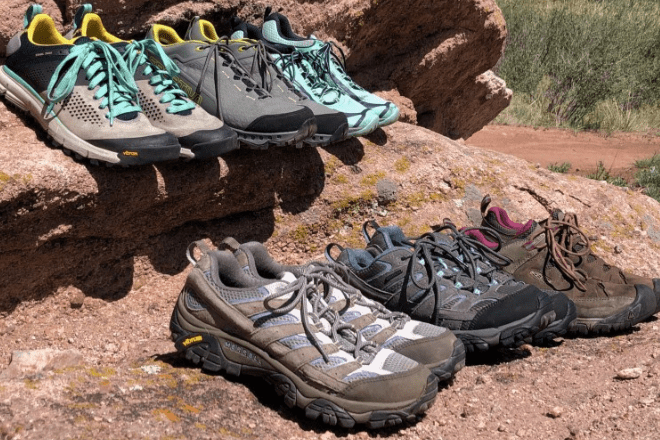
Different hikes require different shoes. The type of terrain, weather, and distance all influence your choice. Here’s a breakdown of the most common types:
- Hiking Shoes: Lightweight and breathable. Ideal for shorter, easy hikes on well-maintained trails.
- Trekking Shoes: Better support for longer or more challenging hikes. They are more durable and protective.
- Hiking Boots: Offer ankle support and are perfect for rocky or uneven terrain. Great when carrying heavy packs.
- Trail Running Shoes: Lightweight with good grip. Best for light hikes on easy trails but may lack support on rougher terrain.
Four Key Factors to Consider When Choosing Hiking Footwear
Before buying, take these four factors into account. They’ll help you choose the perfect pair for your hiking needs.
Terrain Type
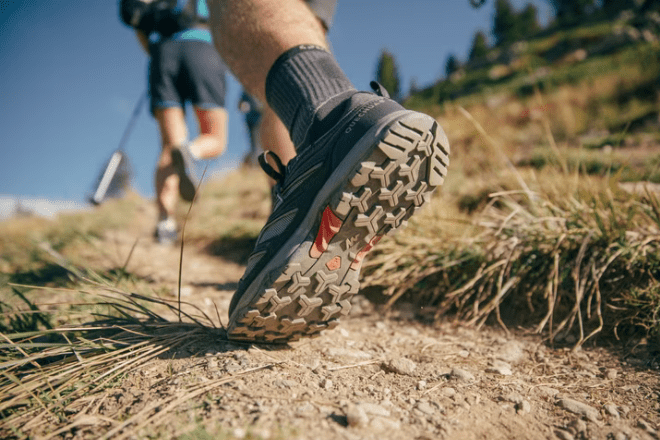
The type of terrain you hike on will impact your footwear choice:
- Easy Trails: For flat or gently rolling paths, trail shoes or walking hiking shoes provide enough support and flexibility.
- Mountainous Terrain: On steep, rocky paths, choose durable mountain climbing shoes or supportive hiking boots.
- Technical Terrain: For off-trail or technical hikes, you may need adventure shoes with more features and protection.
Season and Climate

Your hiking shoes should match the weather:
- Warm, Dry Climates: In hot conditions, lightweight hiking shoes with breathable materials will keep your feet cool.
- Wet, Cold Climates: Expecting rain or snow? Choose waterproof hiking shoes to keep your feet dry.
- Year-Round Hiking: If you hike in varying conditions, look for shoes that balance breathability with water resistance.
Frequency and Duration

How often and how long you hike affects the durability and features you’ll need:
- Frequent Hikers: Regular hikers should invest in high-quality, durable shoes like leather hiking shoes or sturdy trekking boots.
- Occasional Hikers: If you hike infrequently, comfortable and affordable options will do.
- Long-Distance Treks: For extended journeys, prioritize comfort and durability to avoid foot pain or injuries.
Foot Shape and Orthopedic Needs
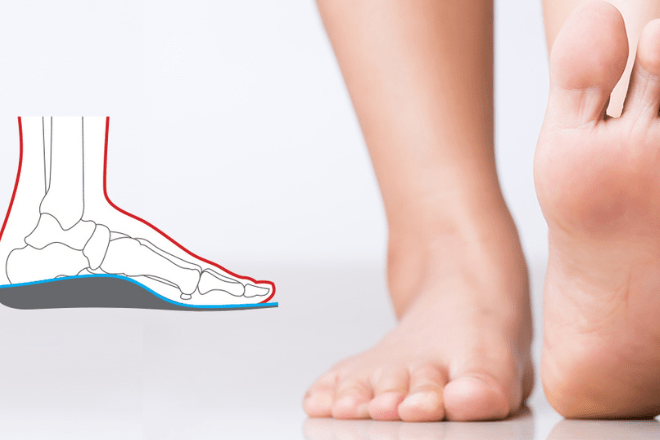
Your foot shape or special needs may influence your choice:
- Wide or Narrow Feet: Look for brands that offer different width options.
- Orthotic Inserts: Ensure the shoes have removable insoles if you need custom orthotics.
- Ankle Support: If you have weak ankles, opt for high-cut hiking boots for added stability.
Features of Comfortable Hiking Shoes
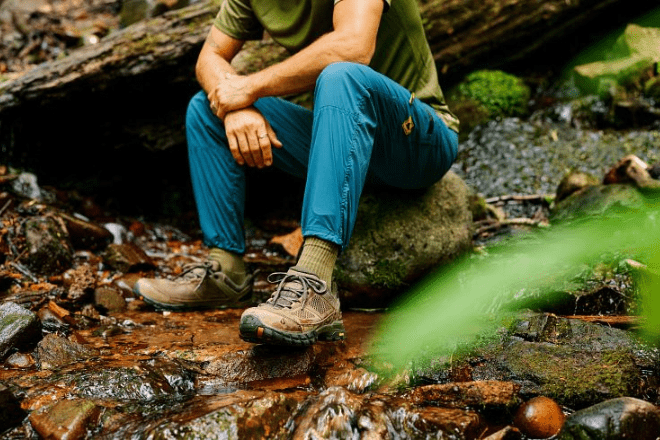
Comfort is critical when hiking. The wrong shoes can cause blisters, soreness, or injury. Consider these key features:
- Cushioning and Arch Support: Provides shock absorption, which is essential for rocky or uneven terrain.
- Breathability: Look for shoes with breathable materials, especially for warm-weather hikes.
- Fit: Ensure enough room is in the toe box to prevent discomfort, especially on downhill hikes.
Waterproof vs. Non-Waterproof Hiking Shoes
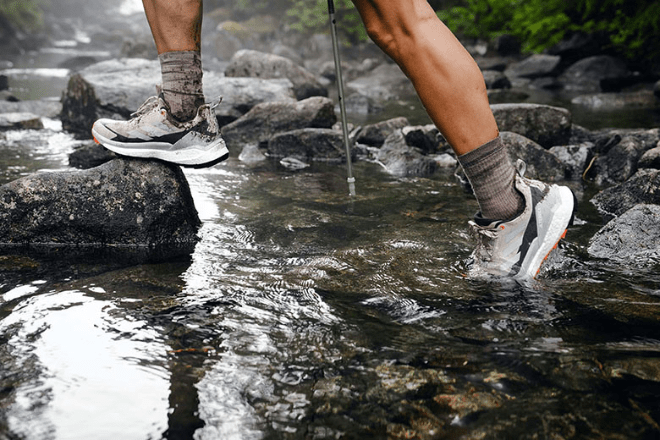
Choosing between waterproof and non-waterproof shoes depends on your environment:
- Waterproof Hiking Shoes: Perfect for wet or muddy trails. These keep your feet dry but may lack breathability in warmer weather.
- Non-Waterproof Hiking Shoes: Ideal for dry, warm weather. They’re lighter and more breathable but won’t protect against wet conditions.
Leather vs. Synthetic Hiking Shoes
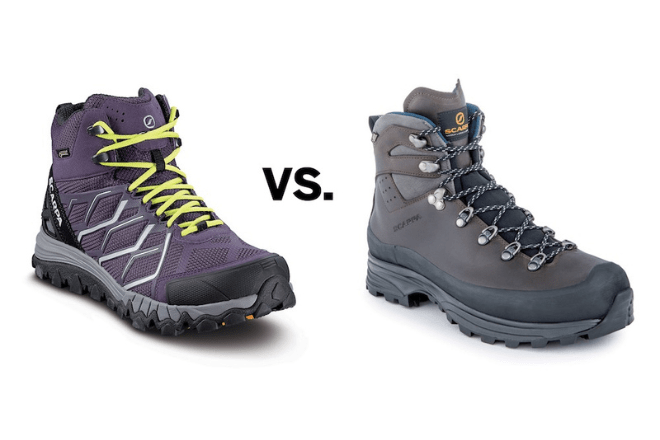
Hiking shoes come in different materials, each with its pros and cons:
- Leather Hiking Shoes: Durable and long-lasting. They’re great for tough trails or multi-day hikes but tend to be heavier and take longer to break in.
- Synthetic Hiking Shoes: Lightweight and breathable. These are better for shorter hikes or hot weather but may wear out faster than leather.
Walking Hiking Shoes vs. Hiking Boots
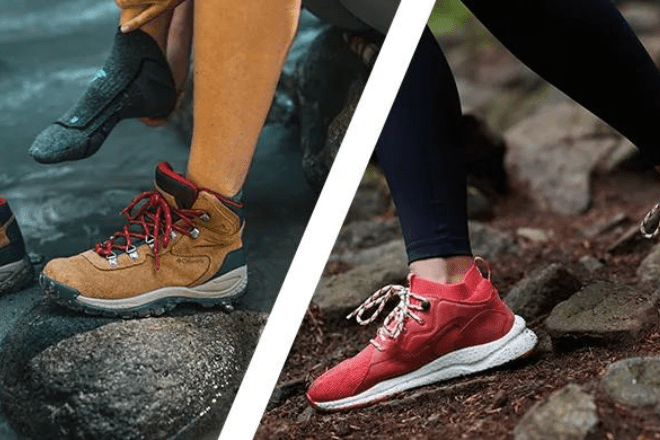
The terrain and pack weight determine whether you need hiking shoes or boots:
- Walking Hiking Shoes: Great for easy trails and day hikes. They’re lightweight but offer less ankle support.
- Hiking Boots: Provide more ankle support and protection. They are essential for rough terrain or when carrying a heavy pack.
Men vs. Women Hiking Shoes

Men and women often have different requirements when it comes to hiking shoes, and many brands design footwear specifically tailored to each.
Hiking Shoes for Men
- Fit and Support: Men’s hiking shoes are generally wider and offer more volume to accommodate larger feet. They provide better support for heavier body weights and often have stiffer midsoles for added durability on rugged terrain.
- Durability: Designed to endure tough conditions, hiking shoes for men are often built with extra reinforcement around high-stress areas like the toe box and heel.
- Style and Design: Men’s hiking shoes are typically available in neutral and dark colors, focusing more on function than aesthetics.
Hiking Shoes for Women
- Narrower Fit: Women’s hiking shoes are designed to fit narrower feet, offering a more snug and supportive feel.
- Lighter Weight: Since women typically carry less body weight, hiking shoes for women are often lighter, reducing fatigue on long hikes.
- Ankle Support: Women’s shoes often focus on providing greater ankle support to help prevent sprains, especially on uneven terrain.
- Design and Style: Many women’s hiking shoes come in a range of styles and colors, blending fashion with functionality.
Conclusion
With the right hiking shoes, you’ll tackle any trail with confidence. Whether you’re after hiking waterproof shoes, lightweight shoes, or something built for tough terrain, there’s a shoe for you. Just remember: comfort, fit, and durability are key. Choose wisely, and your next adventure will be even more enjoyable.
Guide to Pakistan is a valuable resource for discovering the country’s diverse attractions. It provides detailed information on various tourist spots, cultural sites, and natural landscapes. With insights on local customs, accommodations, and travel routes, it helps travelers explore Pakistan’s rich heritage and scenic beauty.
Frequently Asked Questions
Is it okay to wear running shoes for hiking?
Running shoes can work for light, easy hikes but lack the durability and support needed for rougher terrain. Trail running shoes, however, are designed for outdoor use and can be a good alternative.
What is appropriate footwear for hiking?
Appropriate footwear depends on the trail, weather, and length of the hike. For most hikes, hiking shoes or boots are best, but for lighter trails, walking shoes or trail hiking shoes might work.
Are trail running shoes suitable for hiking?
Trail running shoes for hiking are lightweight, flexible, and offer excellent grip on well-maintained trails, making them a good option for shorter or less technical hikes



